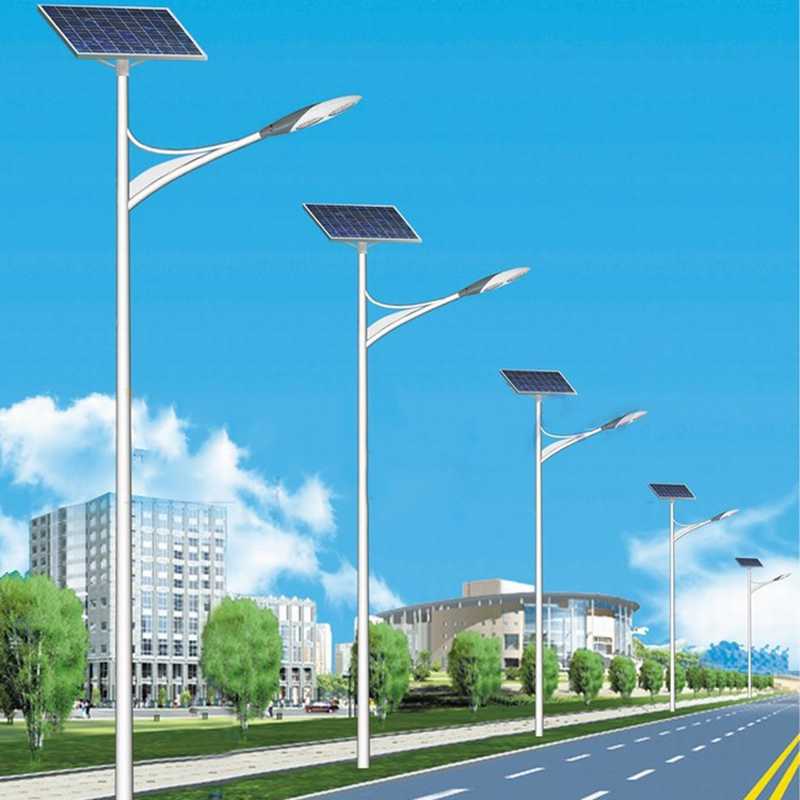Solar street lights seem simple—until you’re on-site, wind’s blowing, the crane’s late, and someone forgot the drill bits.
Nail the install on day one, and you’ll avoid 90% of the headaches later. This isn’t just a guide—it’s a field-tested survival kit for contractors, site managers, and crews who want things done right the first time.
1. What to Bring Before You Even Think About Digging
We’ve seen it all—showing up without proper tools, missing brackets, wrong controller model. It slows down the job and makes everyone grumpy.
Don’t assume. Double-check your gear and know your components inside out.
1.1 Get Familiar with the Gear
| Component | What It Does |
|---|---|
| Solar Panel | Soaks up sunlight, feeds your battery |
| LED Fixture | Provides the actual lighting |
| Battery (Lithium/GEL) | Stores juice for night use |
| Pole & Mount Brackets | Holds everything together |
| Charge Controller | The brain—manages power, sensors, load control |
| Motion Sensor (opt.) | Saves energy when no one's around |
Each part matters. One missing bolt or wrong wire? Whole system fails.
1.2 Tools That Save You from Regret
- Adjustable wrench (not one-size-fits-all)
- Cordless drill with sharp bits
- Safety gear—helmets, gloves, steel-toe boots
- Spirit level (feels overkill—until you see a crooked panel)
- Crane/lift for poles over 6 m
- Multimeter
- Waterproof sealant (the good stuff, not hardware store leftovers)
We once had a tech try sealing a controller box with duct tape. It worked—for 2 days.
2. Site Survey: Walk It Like a Detective

This step separates the pros from the weekend warriors.
We always walk the site at different times of the day—looking for shadow creep, drainage issues, or that one tree that ruins everything at 2 PM.
2.1 Pick the Right Spot (or Pay Later)
- Avoid shade from 9 AM to 4 PM
- No low-lying areas with standing water
- Face panels south (or north if below the equator)
- Keep at least 3–5 meters from walls or tall trees
Real talk: I once placed a light too close to a telecom tower. Signal interference fried the motion sensor. Lesson learned.
2.2 Calculate Lighting (Don’t Just Wing It)
| Factor | Rule of Thumb |
|---|---|
| Pole height | 6–9 m for streets, 4–6 m for parks |
| Spacing | 2.5–3× the pole height |
| Lumen output | 6000–10,000 lumens for roads, ~3000 for paths |
| Beam angle | Check the LED spec sheet—don’t guess |
Use a simple lux calculator or simulator app. Saves money, avoids blind spots.
3. The Foundation: Strong Base, Strong System
Concrete isn’t exciting, but it’s critical. I’ve seen lights toppled by a storm because the hole was too shallow.
Do this right, and the pole stands for a decade. Mess it up? You’ll hear about it next rainy season.
3.1 Dig and Pour Like You Mean It
| Pole Height | Hole Depth | Hole Diameter |
|---|---|---|
| 6–8 m | 1.2 m | 0.5 m |
| 9–12 m | 1.5 m | 0.6–0.7 m |
Tips from the field:
- Always reinforce with rebar
- Use a bolt template so anchor bolts line up (we’ve forgotten it—it sucks)
- Let it cure at least 48–72 hours—no shortcuts
3.2 Prepping the Pole
- Bolt the bracket tightly—no “good enough” here
- Route wires cleanly—no spaghetti mess
- Use waterproof sealant generously
- Paint with anti-rust if near sea air
- Lift the pole with a crane if it’s tall. Seriously—don’t be a hero.
4. Installing the Panel & LED Fixture

Here’s where precision pays off. One wrong tilt, and your light’s dead by midnight.
Tilt the panel to match your latitude—Uganda? Around 3–5°. Simple rule, big impact.
4.1 Mounting the Panel
- South-facing (or north-facing in the southern hemisphere)
- Secure with stainless steel bolts
- Leave at least 10 cm underneath for airflow
- Check voltage with a multimeter as you tilt—higher volts = better angle
We once had a guy eyeball it. Came back a week later, 30% performance drop.
4.2 Setting Up the LED Light
- Mount 6–8 m high
- Angle downward slightly to reduce glare
- Make sure light spreads overlap
- Tighten every bolt—one came loose during a storm once, shattered the lens
Do a night walk after install—your eyes catch what drawings miss.
5. Wiring and Controller Setup
This is where people get lazy—and it’s where most problems begin.
Match the colors (red-red, black-black). And don’t skimp on waterproofing—it saves headaches later.
5.1 Wiring: Order Matters
- Panel → controller
- Battery → controller
- Load → controller
Label wires if you're installing in bulk. We’ve wired 60+ poles in a row—labeling saved us from madness.
5.2 Programming the Controller
- Select correct battery type: LiFePO₄ or GEL
- Set lighting mode: dusk-to-dawn or timed (we usually go dusk + 6hr)
- Double-check load wattage matches light output
We had a unit dim to 10% because the controller defaulted to “eco mode.” Took two days to figure it out.
6. Testing: Don’t Leave Without It

This is not a “flip the switch and go” moment. Test like your reputation depends on it—because it does.
What we always check:
- Panel voltage in full sun (~18–22 V)
- Cover the panel—light should turn on in 30 sec
- Controller LEDs: charging, full, load—all should be active
- Let it run for one full night before signing off
In Ghana once, we forgot to simulate night. Lights didn’t turn on. The client called us back two days later—not fun.
7. Final Operational & Maintenance Checklist
Think of this as your “don’t get called back next week” list.
| Task | When |
|---|---|
| Panel tilted and secure | Post-install |
| All bolts tightened | Post-install |
| Battery mounted and sealed | Post-install |
| Wiring neat and labeled | Post-install |
| Controller programmed & tested | Post-install |
| Clean panels | Every 3 months |
| Check battery voltage | Every 6–12 months |
| Walk-through inspection | Once a year |
Use a cloth and water to clean panels—no harsh brushes.
When to Call in the Pros
- Terrain is uneven or mountainous
- You’re installing 20+ lights
- Smart mesh controllers are involved
- It’s a high-profile government project
Don’t wing it—get experienced hands. We’ve been called to fix too many “cheap but wrong” installs.
✅ Final Thoughts
Street lights look simple from the outside. But behind every solid system is thoughtful planning, field experience, and someone who took the time to do it right.
Follow these steps, adjust for your site, and you’ll deliver a lighting system that lasts a decade—with no late-night calls.
FAQ
Q1: How long does installation take per light?
2–4 hours. Add 2–3 days for foundation curing.
Q2: Can I do this myself?
Yes—for small sites. For large setups, smart systems, or bad terrain, bring in the pros.
Q3: What goes wrong most often?
Wiring reversed, panels not tilted, loose bolts, no night testing—we’ve made all those mistakes, so now you don’t have to.


